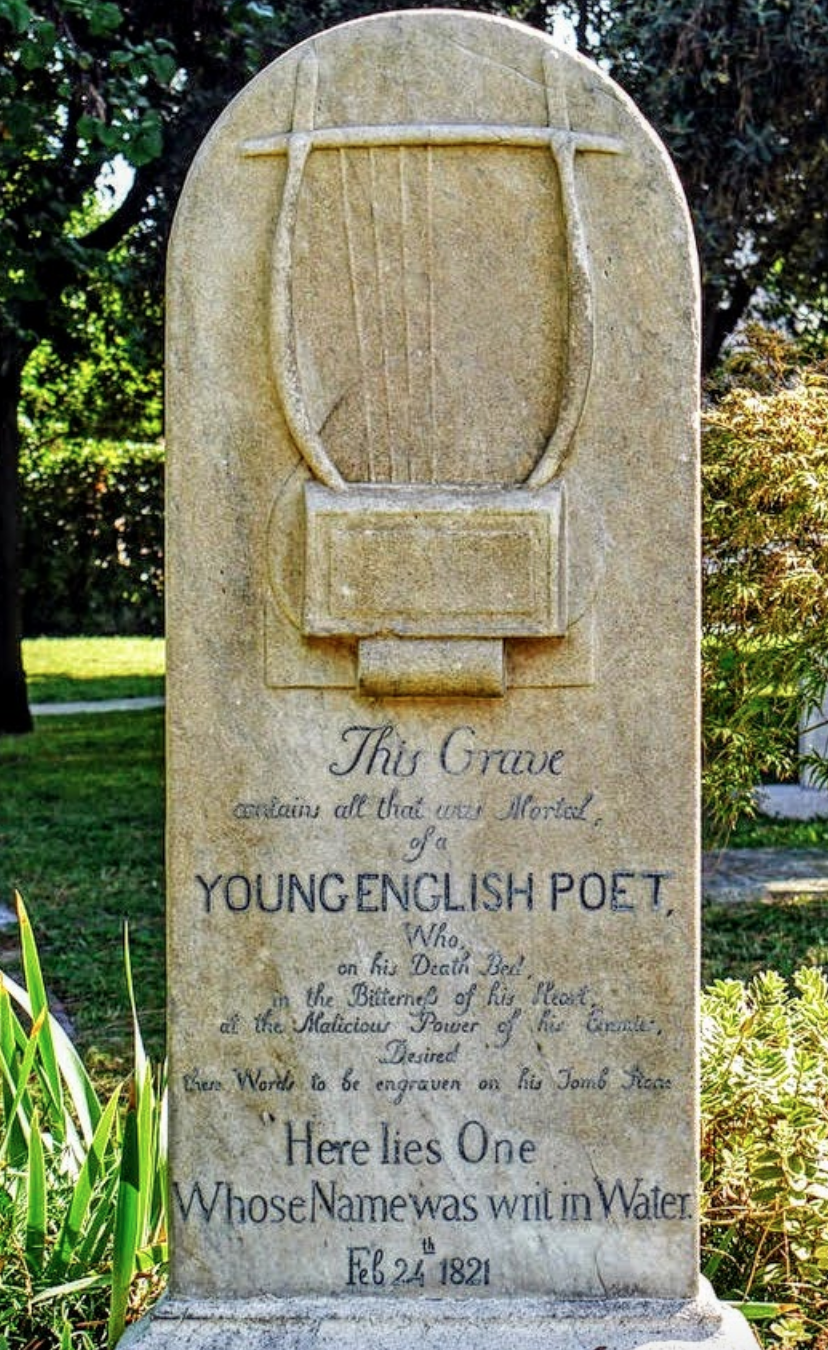 Here is my second podcast – another reading of a longish poem by a Romantic poet. Given that this is the bicentenary of Shelley’s death (he drowned near Viareggio in July 1822), which occurred just a year after that of Keats, it seems suitable to read Shelley’s elegy for the younger poet, “Adonais”. This is almost certainly the most beautiful tribute that any poet has ever paid to a contemporary. The poem, which was written in April 1821, just a month and a half after Keats’s death, is modelled on the elegies of classical antiquity and is composed of 55 Spenserian stanzas – a stanza form that Shelley had used in an earlier long work (“The Revolt of Islam”, 1818) and one that Keats himself had used in one of his most beautiful narratives (which I will record later), “The Eve of St Agnes” (1819).
Here is my second podcast – another reading of a longish poem by a Romantic poet. Given that this is the bicentenary of Shelley’s death (he drowned near Viareggio in July 1822), which occurred just a year after that of Keats, it seems suitable to read Shelley’s elegy for the younger poet, “Adonais”. This is almost certainly the most beautiful tribute that any poet has ever paid to a contemporary. The poem, which was written in April 1821, just a month and a half after Keats’s death, is modelled on the elegies of classical antiquity and is composed of 55 Spenserian stanzas – a stanza form that Shelley had used in an earlier long work (“The Revolt of Islam”, 1818) and one that Keats himself had used in one of his most beautiful narratives (which I will record later), “The Eve of St Agnes” (1819).
Shelley described the poem as “the least imperfect” of his works, “perhaps better in point of composition than anything I have written”. It is written in a deliberately high style, which mounts to a sublime crescendo in the final 17 stanzas, in which he expresses his conviction that Keats has transcended human life, becoming one with the immortal. The reader/listener is invited to ponder on Rome, where the poet died and is buried, as a symbol both of worldly corruption and decay and of immortality (the Eternal City). He describes the Non-Catholic cemetery where the poet is buried (and where Shelley’s own three-year-old son had been buried two years earlier – although Shelley does not directly mention this in the poem), under the pyramid of Caius Cestius.
The imagery of the final stanza, which begins with a reference to Shelley’s best-known poem, “Ode to the West Wind”, –
is eerily premonitory of Shelley’s own death in a sailing accident just a year after the composition of this poem. Shelley’s ashes (his body was cremated on the shore near Viareggio) were to be buried in the same cemetery.
For those wanting a guide to the poem, which is both sublimely musical and highly complex, the Wikipedia page provides a helpful summary.
In July 1969, in the Hyde Park concert commemorating the death of Brian Jones, Mick Jagger, wearing a white caftan, read two stanzas from the poem – before releasing 3500 butterflies. His style is rather different from mine but extremely effective. If it helps, try to imagine me wearing a white caftan as I read the poem…

I am in awe of your diction and phrasing Gregory. Beautifully done. Thank you.
Thanks so much, Janet! Very glad you like it.
Another beautiful reading, Gregory. Perhaps you will have seen this good review of Shelley in TLS:
https://www.the-tls.co.uk/articles/complete-poetry-of-percy-bysshe-shelley-volume-seven-nora-crook-review-pamela-clemit/
Thanks, Dave! Much appreciated. And thanks for the link – I hadn’t read this issue yet. There’s a lot of Shelley about right now! A lot going on in Lerici, of course. And there’s a two-day conference in London beginning tomorrow – and we’ll be having a two-day conference in Bologna and Ravenna in October.